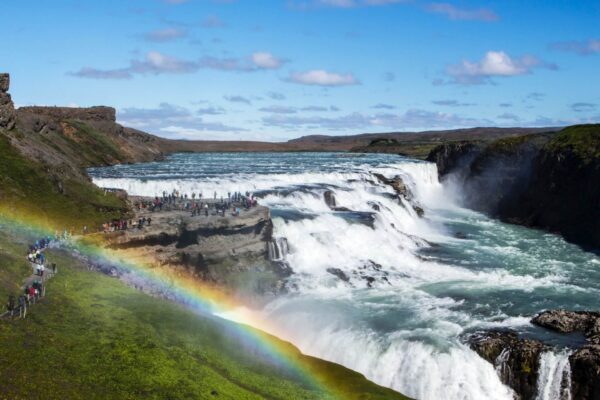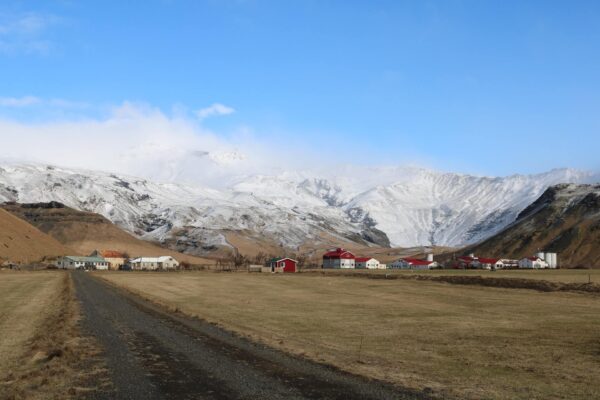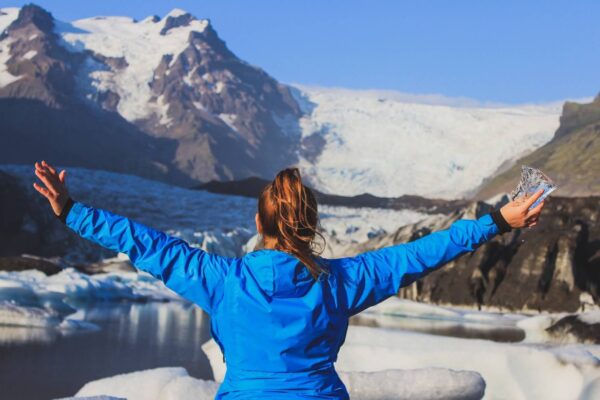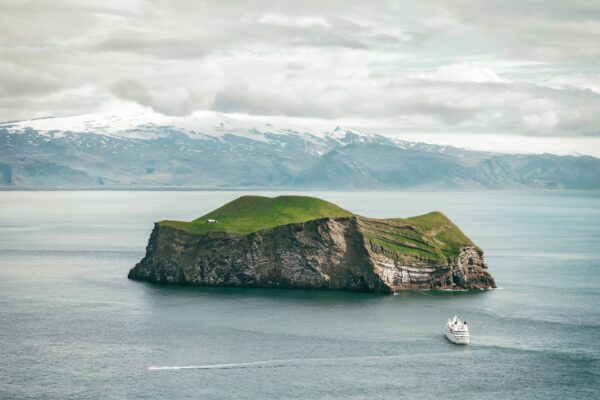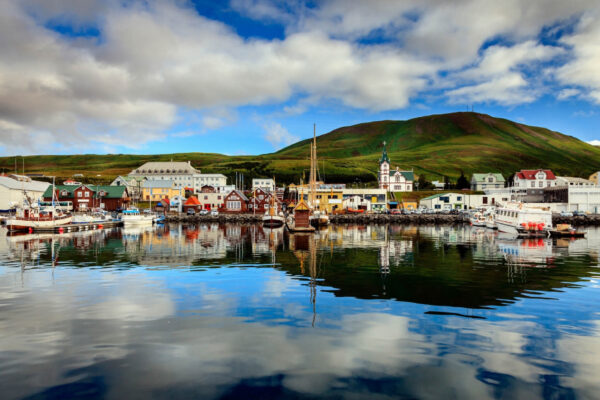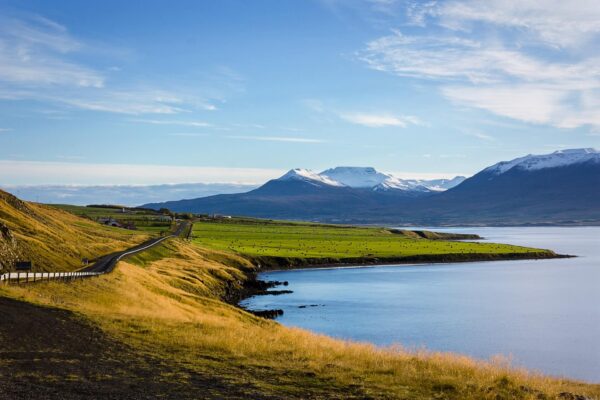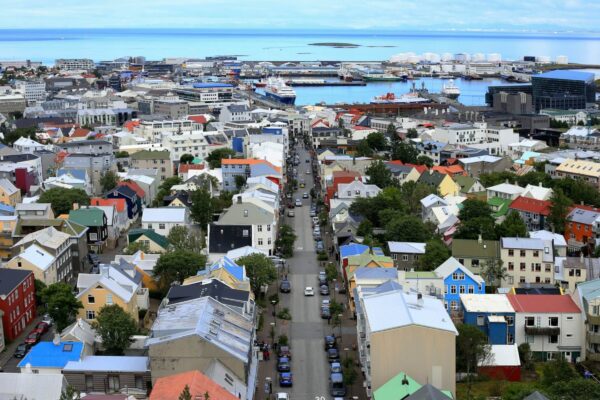Mountains in red, green, orange, yellow, black, white and brown: Landmannalaugar is a valley in the highlands of Iceland and is considered one of the most beautiful areas in the country. Its colourful appearance is unique and attracts many photographers. There are also hot springs here where you can bathe. Here we reveal how the different colours are created and what else you can experience in the area around Landmannalaugar.
Where is Landmannalaugar located?
The area is located near the Hekla volcano in the south-west of Iceland, in the municipality of Rangárþing ytra. This is about 180 kilometres from Reykjavík. Landmannalaugar is part of the southern highlands of Iceland and is one of the most popular places for hiking in summer.
Landmannalaugar is part of the Fjallabak nature reserve (which translates as “mountain ridge”), which covers around 47,000 hectares of land. It also lies on the edge of the Laugahraun lava field, which was formed after an eruption of the Torfajökull volcano in 1477.
Origin and background
The area around Landmannalaugar was formed by the eruptions of the Torfajökull volcano and is considered the largest rhyolite area in Iceland. There is still geothermal activity here today, which is why Landmannalaugar is also known as a geothermal oasis.
Translated, Landmannalaugar means “the warm springs” or “the baths of the people”. The name is due to the natural geothermal pools that can be found along the hiking trails.
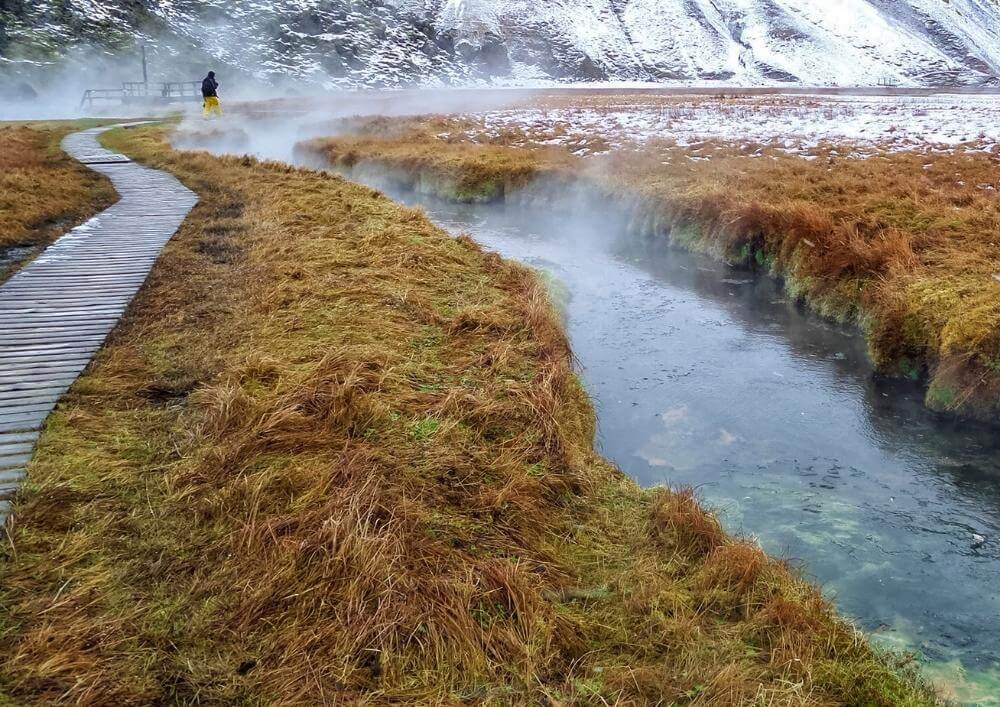
The impressive colourful mountains are also due to the eruptions, as they consist of various geological elements such as sulphur, iron, limestone, pitchstone and obsidian. There are also green blankets of moss and white remnants of snow. The changing light causes the mountains to change colour again and again. The most impressive mountains include the yellow Brennisteinsalda, the grey-blue Bláhnúkur and the greenish Grænagil Canyon.
Landmannalaugar: journey
Landmannalaugar can only be reached by car from all sides via highland roads, so-called F-roads – but only with four-wheel drive. It should also be noted that the Icelandic highlands can only be visited in summer. The first highland tracks are opened in June, as the roads are covered in snow or washed over in winter.
If you are travelling from the south via the F208 highland road, spectacular panoramas are guaranteed: You will pass lava fields and waterfalls. However, this route, which is around 102 kilometres long, is only suitable for experienced drivers who are not afraid of off-road routes. It even crosses rivers. The route via the north, on the other hand, is easier and somewhat shorter.
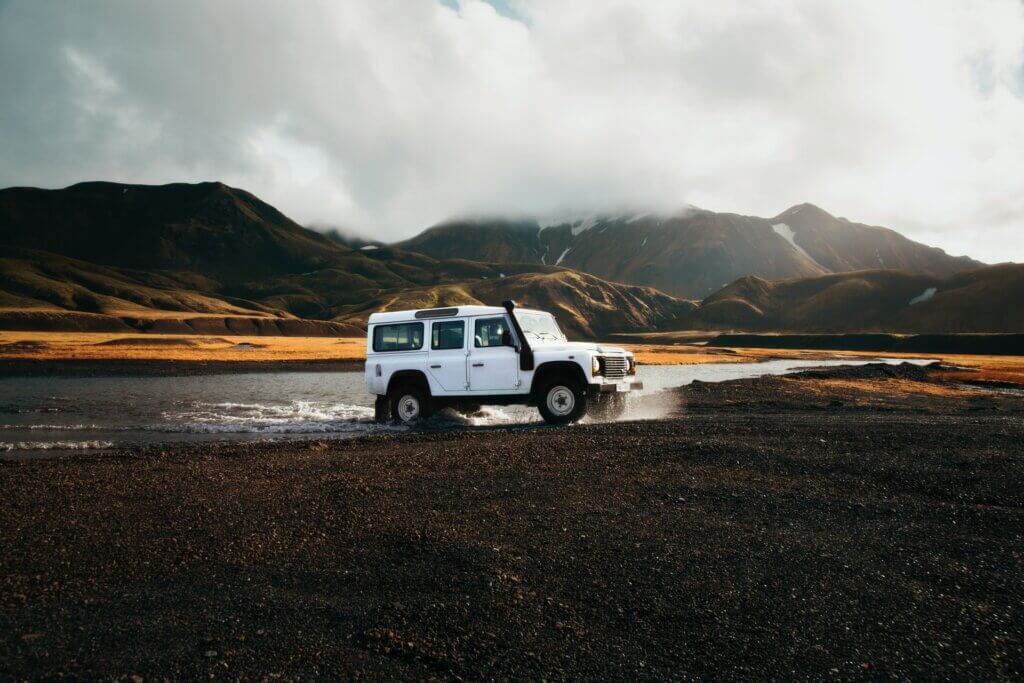
Important: If you hire a car, make sure that it is suitable for fording (crossing) rivers. If necessary, discuss your planned route with the provider. Also make sure you fill up the car with petrol before heading into the highlands, as there is no petrol available locally.
If you prefer to take it easy and don’t want to drive yourself, you can book day tours by super jeep in small groups or visit the highlands as part of package deals. Here, trained drivers take over the route. Highland buses also run from Reykjavik to Landmannalaugar.
Those travelling from Reykjavik to Landmannalaugar can take in even more highlights along the way. The route takes you along the Golden Circle Route, past Thingvellir National Park and the Gullfoss waterfall.
Activities and tours in the highlands
The region is popular for hiking and trekking. In the summer season, tour operators offer daily tours. There are hiking trails of varying lengths and difficulties – from day tours to multi-day adventures with overnight stays in huts and camps. These are best booked in advance.
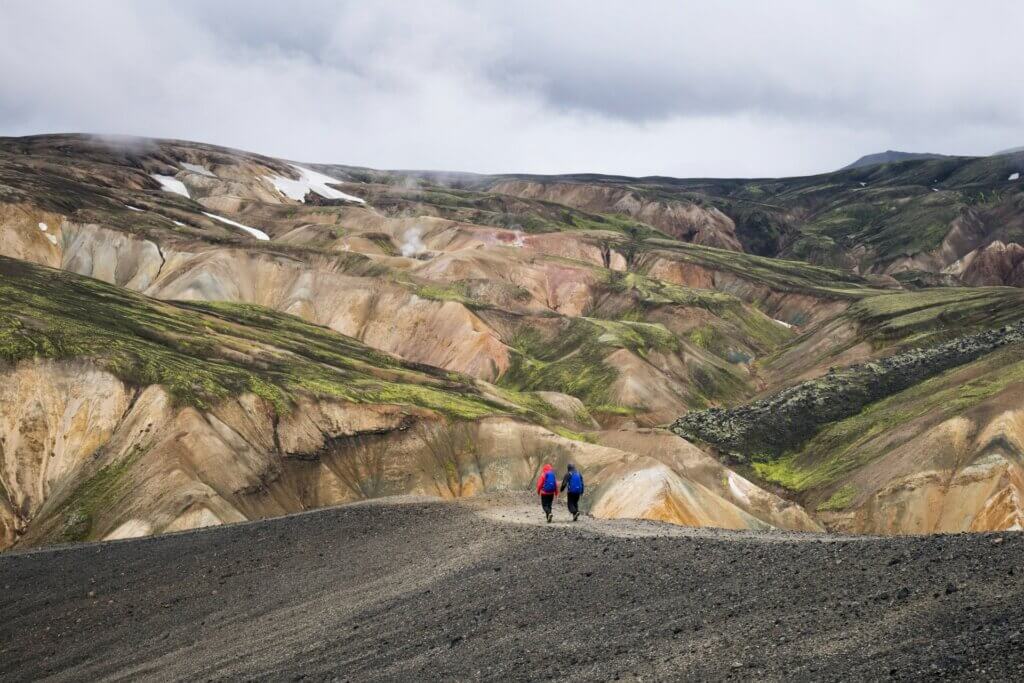
The easiest hike leads across the Laugahraun lava field, which with its black lava rock is a stark contrast to the colourful peaks. Landmannalaugar is also home to the northern end of Laugavegur. This is one of the most popular hiking trails in Iceland.
Numerous day trips are also offered from the capital Reykjavik. The Highland Bus takes you to Landmannalaugar on a daily journey of around 4 hours. If you book a guided tour, you can even be picked up directly from your hotel. You should not miss out on a dip in the hot springs. To this day, this is completely free of charge. The water temperature is between 36 and 40 degrees. There are shower containers around the pools.
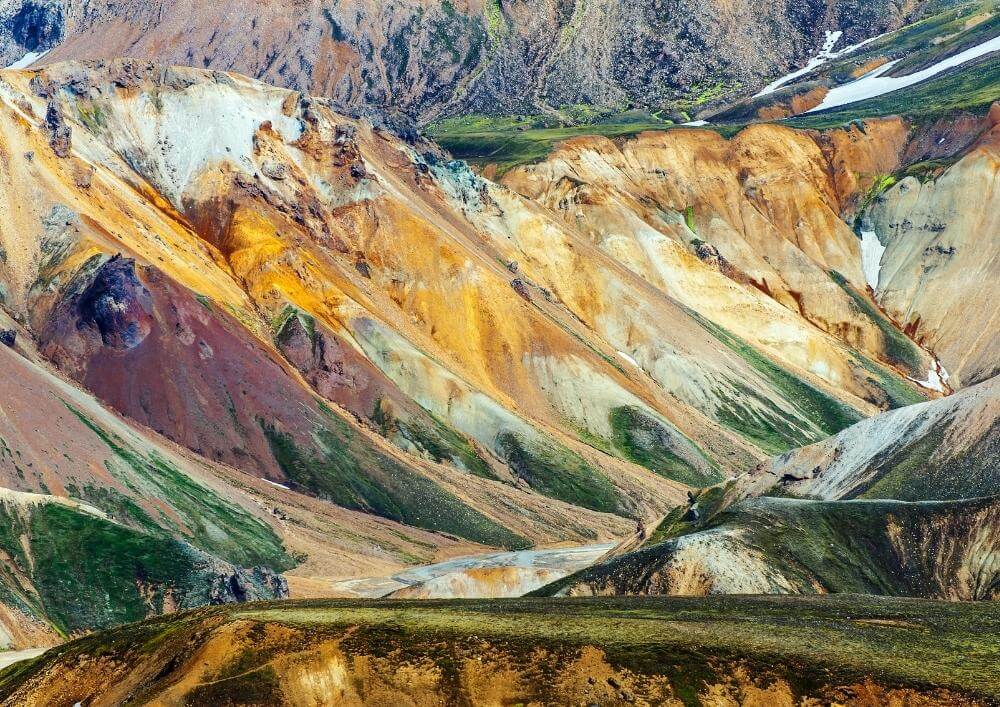
A special highlight in Landmannalaugar is a riding tour lasting several days on the back of an Icelandic horse. You can reach places that would not be possible on foot. These are also organised in a group and include equipment, food and accommodation.
Accommodation
As wild camping is generally prohibited in the national park around Landmannalaugar, you should book a place in the hiker’s hut or at the associated Landmannalaugar campsite. In summer, there is also a bus here where you can buy your basic provisions.
Alternatively, you can stay at the Hrauneyjar Highland Centre, a guest house located just outside the national park. From here you can set off on a tour to Landmannalaugar.
